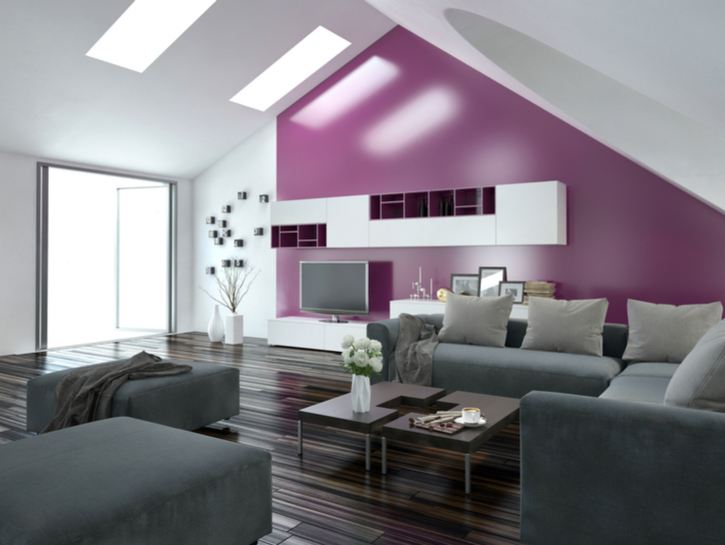When we think of an accent wall, the first thing that comes to mind is color. Isolating one wall of a room with contrast is a common decorating technique for modern living rooms, but making a great accent wall is more complicated than just picking your favorite color and painting. To pick the right color, you need to make sure the wall will complement the room and the furniture in it. Here are some tips to make sure you have the perfect accent wall for your space:
Explore Your Color Options

Selecting the right color is essential. The key to creating a good accent wall is choosing a color that contrasts with the overall room. Sticking with complementary colors is a safe and easy way to coordinate colors, especially if you’re not afraid of bold, bright colors. If you have a blue couch, try an orange wall. If you have yellow chairs and pillows, paint a purple wall.
An easy way to determine which colors complement each other is by turning to the color wheel — the colors across from each other are complementary. Other color schemes work well together too, like pairing the three primary colors (blue, yellow and red) and the three secondary colors (purple, orange and green).

Africa Studio/Shutterstock
These bright colors might not be everyone’s go-to choice, so you can turn to more subdued earth tones as well. For example, a dark brown wall will coordinate well with blues and greens.
Add An Accent Wall Without Paint

Artazum/Shutterstock
Painting is not the only way to make an accent wall. You can make a wall pop by adding textures as well, such as decorative paneling made of wood, brick, tile or stone. This process can be more expensive than simply painting a wall, but the striking contrast is well worth it.

Artazum/Shutterstock
Installing extensive shelving, hanging a tapestry or hanging up a large painting is another way to create the look of an accent wall by differentiating it from the surrounding walls. If you want a patterned accent wall, you can also install some wallpaper.
Deciding On A Wall

Photographee.eu/Shutterstock
When deciding which wall to paint for your accent wall, you want to find the natural focal point of the room. If you’re adding an accent wall to your bedroom, the wall behind your headboard is a natural choice. But for other rooms, such as living rooms, it can be a bit more difficult to locate which wall you should paint. It’s recommended not to choose one of the longest walls of the space — instead, pick a shorter wall that will pop. After all, your accent wall should accent a room, not dominate it. If you can paint a wall that doesn’t have windows, that is a great option as well.
